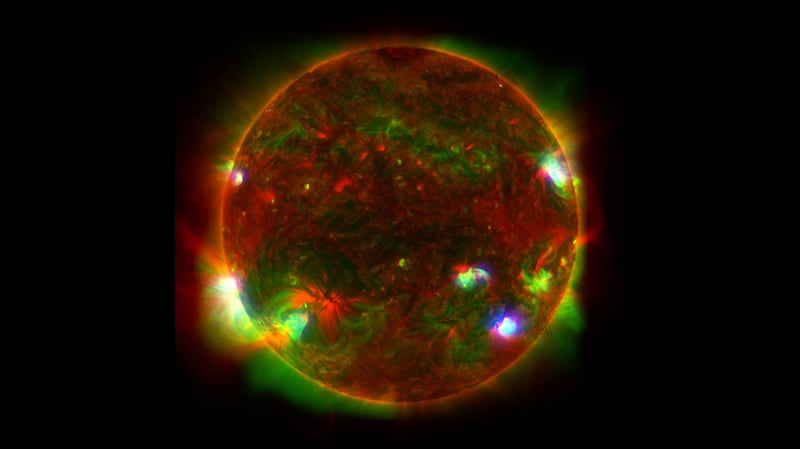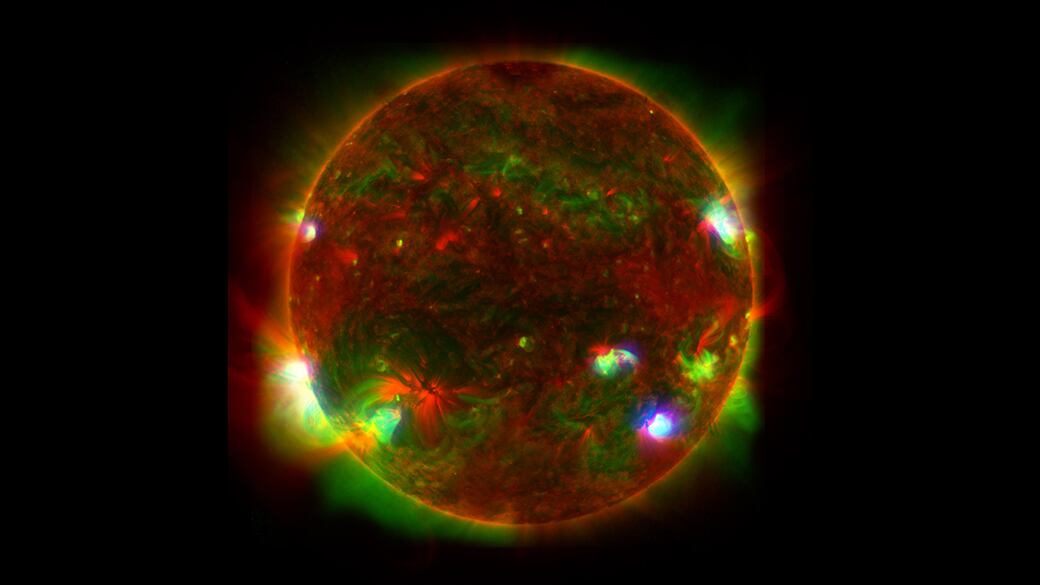Despite being the closest star to Earth, there’s still a whole lot we don’t understand about the sun. For example, the sun’s outer atmosphere—or the corona—reaches temperatures 100 times hotter than its surface and researchers still don’t fully understand why this is.
That’s why NASA recently took the Nuclear Spectroscopic Telescope Array (NuSTAR), one of the agency’s most powerful x-ray telescopes, and pointed it at the sun. Since it’s able to make x-ray observations, the probe is capable of picking up on light from areas of the star that might be the source of the corona’s insanely hot temperatures.
The agency created a composite image of the NuSTAR data with images gathered from the Solar Dynamics Observatory and the Japanese Aerospace Exploration Agency’s X-ray Telescope—and the results are absolutely trippy.
Check it out below.

Along with being eye popping, the image also clues scientists in on some potential reasons for why the corona is so hot. More specifically, the NuSTAR picked up light from material produced by nanoflares, which are small eruptions that occur in the sun’s atmosphere. You can see this come through in the spots on the image that are brighter than the rest of it.
These bursts of heat and light are capable of producing even higher temperatures than normal solar flares. Researchers suspect that enough nanoflares might be occurring to heat the corona to more than a million degrees Celsius.
This is just the latest of a wealth of discoveries that researchers have made of the sun in recent years. Last May, the Solar Orbiter mission uncovered a spectacular view of the star during a close flyby. These insights help scientists better understand how solar weather events (yup, the sun has a kind of weather too) like coronal mass ejections can impact humans on Earth via electrical interference.
Of course, more research is needed in order to verify the real reason the corona is so much hotter than the sun’s surface. For now, we can at least relish in the downright trippy photos produced while trying to answer this age old question.






